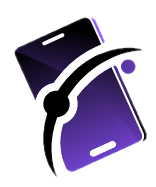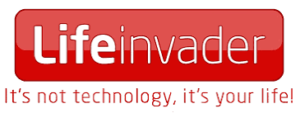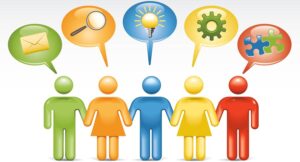What Does Ed Tech Stand For ?

What Does Ed Tech Stand For :- Education Technology, commonly referred to as “EdTech,” encompasses the realm of digital technology dedicated to crafting and implementing tools – spanning software, hardware, and associated processes – aimed at enhancing education.
In simpler terms, EdTech serves as both a discipline and a moral endeavor, striving to facilitate student learning and elevate performance by harnessing and managing suitable technological resources and processes.
While EdTech may initially seem like a specialized domain, its impact resonates across diverse demographics. Discover if you stand among those poised to reap the rewards of EdTech’s evolution, and uncover avenues through which you can contribute to its expansion.
A Brief History of Edtech
The origins of modern EdTech stretch back further than many might imagine. In the 1920s, select English-speaking governments initiated educational radio programs, pioneering the notion that learning could transcend traditional classroom settings and even be enjoyable.
Fast forward to the 1960s, and schools worldwide welcomed a groundbreaking addition: the television. By the 1990s, technological advancements had substantially reduced the cost of film production, ushering in what film enthusiasts dubbed the ‘Golden Age of Home Video’ while concurrently spurring a surge in educational video resources.

For millennials, the sight of their teacher wheeling in a hefty TV and VCR evoked excitement, injecting a dash of fun into the school day. Even today, many adults fondly recall the iconic 90s National Geographic intro, a nostalgic reminder of those enriching classroom moments.
During this era, students reaped the benefits of educational games and Tools Software tailored to enrich their understanding of subjects like geography and history, with classics like The Oregon Trail and Where in the World is Carmen Sandiego leaving an indelible mark.
As the early 2000s dawned, the internet’s global proliferation hinted at the inevitable integration of computers into everyday life. Schools began incorporating regular computer lessons and touch typing classes into their curricula, preparing students for the digital age ahead.
The emergence of social networking giant Facebook in 2007 signaled a paradigm shift in technology’s role in daily life, granting students unprecedented access to real-time information via search engines.
This newfound era of information and technology paved the way for technology’s integration not just within classroom settings but also in broader society. Today, app stores abound with a plethora of educational offerings catering to virtually every conceivable need, underscoring how EdTech has evolved lightyears beyond its humble beginnings in radio documentaries.
What Does Ed Tech Stand For How Does Edtech Help Students and Teachers?
EdTech is reshaping the learning landscape, offering students and teachers alike a myriad of benefits that revolutionize traditional education methods. Here’s a closer look at how EdTech is transforming both student learning experiences and teaching practices:

Benefits of EdTech for Students:
- Increased Collaboration: Tablets equipped with learning games and cloud-based apps facilitate collaborative problem-solving among students, fostering teamwork and peer-to-peer learning.
- 24/7 Access to Learning: IoT devices grant students unrestricted access to educational materials and resources, enabling them to engage in learning activities anytime, anywhere.
- “Flipping” the Classroom: Video lectures and learning apps empower students to learn at their own pace outside of the classroom, freeing up valuable class time for collaborative projects and interactive learning experiences.
- Personalized Educational Experiences: EdTech allows educators to tailor learning plans to individual student needs and preferences, promoting personalized learning journeys and targeted support.
- Attention-Grabbing Lessons: Innovative tech tools captivate student interest and participation, enhancing classroom engagement through interactive activities, global collaborations, and gamified learning experiences.
Benefits of EdTech for Teachers:
- Automated Grading: AI-powered grading tools streamline assessment processes, saving teachers valuable time and enabling them to focus on personalized instruction and support.
- Classroom Management Tools: EdTech solutions facilitate effective communication with students and parents, promote self-regulated learning behaviors, and create a more organized and collaborative classroom environment.
- Paperless Classrooms: Digital classrooms reduce reliance on printed materials, minimize administrative tasks associated with paper-based assignments, and promote eco-friendly practices.
- Eliminating Guesswork: Real-time data analytics tools provide teachers with insights into student progress, strengths, and areas for improvement, empowering proactive intervention and personalized learning strategies.
In essence, EdTech empowers both students and teachers to embrace innovative learning approaches, enhance collaboration and engagement, and unlock the full potential of education in the digital age.
What Does Ed Tech Stand For What Are the Main Trends in Edtech?
Innovative trends are shaping the landscape of education, offering new avenues for engagement and personalized learning experiences. Let’s delve into some of the exciting developments emerging from the dynamic world of EdTech:

- Gamification: Imagine turning learning into a captivating adventure where students embark on quests, earn rewards, and unlock achievements—all while mastering educational concepts. Gamification infuses the thrill of gameplay into educational content, making learning both enjoyable and effective.
- Adaptive Learning: EdTech pioneers recognize that every student learns at their own pace and in their unique way. Adaptive learning systems leverage technology to tailor educational experiences to individual needs, fostering personalized learning journeys and maximizing student potential.
- Augmented Reality and Virtual Reality (AR/VR): AR and VR technologies are revolutionizing education by transporting students to immersive, interactive learning environments. From exploring ancient civilizations to conducting virtual science experiments, AR and VR offer unparalleled opportunities for experiential learning and exploration.
- Redesigned Learning Spaces: The traditional classroom is evolving into a dynamic, tech-enabled learning environment. EdTech solutions optimize learning spaces by integrating devices like tablets and smartboards, fostering collaboration, and enhancing connectivity between students and teachers through cloud-based platforms.
- Learning From Anywhere: EdTech transcends physical barriers, enabling students to access educational resources and instruction from any location with internet connectivity. This flexibility not only promotes equitable access to education but also empowers families to incorporate learning seamlessly into their lifestyles, whether at home, on vacation, or anywhere in between.
These trends underscore the transformative power of EdTech in revolutionizing education, offering innovative solutions to enhance engagement, adaptability, and accessibility for learners of all ages and backgrounds.
Also Visit :-





